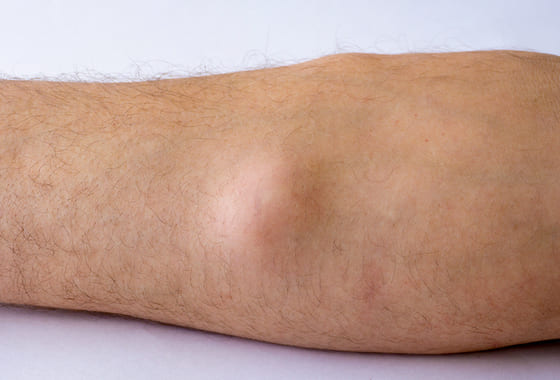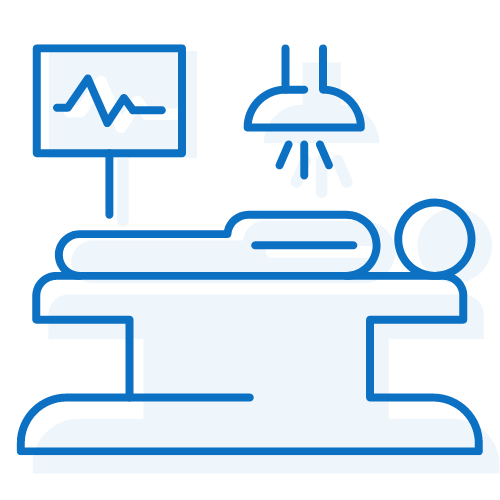Lipoma – Causes, Symptoms, Treatment and Prevention
Overview of Lipoma
Lipoma is a benign tumor made up of fat cells. It commonly appears as a rubbery bump under the skin. Lipomas can occur anywhere on the body, but they are most often found on the shoulders, neck, back, or arms.
Lipomas are usually slow-growing and painless, and do not require treatment. However, if a lipoma is large, painful, or growing rapidly, it may need to be removed surgically.
Lipomas are thought to be caused by a combination of genetic and environmental factors. People with certain medical conditions, such as Gardner’s syndrome or adiposis dolorosa, are more likely to develop lipomas.
Free Consultation
Get Lipoma treatment cost estimate
Symptoms of Lipoma

Symptoms of Lipoma are:
- Situated just under the skin. They happen most often in the neck, shoulders, back, abdomen, hands and thighs.
- Soft and doughy to the touch. With minimal finger pressure, they also move freely.
- Generally small. Lipomas are generally less than 2 inches in diameter, although they have the potential to expand.
- Sometimes painful. A lipoma that becomes painful when it expands and compresses nerves or contains a lot of blood vessels is referred to as a benign tumor.
Causes of Lipoma
Lipomas are a type of fatty tumor that develops on the skin. There’s no consensus about why they occur. They’re hereditary (passed down through families). If someone in your family has one before you, you’re more likely to get one yourself.Multiple lipomas can develop as a result of a variety of factors. Lipoma-inducing circumstances include:
Dercum’s disease:
These lipomas are very painful. They develop most often on the arms, legs, and trunk, and they’re known as adiposis dolorosa or Anders syndrome.
Gardner syndrome:
Gardner syndrome is a type of hereditary adenomatous polyposis (FAP) disorder that causes lipomas as well as a variety of other health issues.
Hereditary multiple lipomatosis:
This disease, also known as familial multiple lipomatosis, is hereditary (passed down through families).
Madelung’s disease:
This condition is seen in males who consume a lot of alcohol. Madelung’s disease causes lipomas to develop around the neck and shoulders.
Types of Lipoma
Lipomas come in a variety of forms. Doctors categorize lipoma varieties based on the appearance of tissue viewed under a microscope. The following are types of lipomas:
Conventional lipoma:
Lipoma that does not affect the skin and other tissues or organs.
Atypical lipoma:
These growths contain more fat and a greater quantity of cells than typical lipomas.
Hibernoma:
This proliferation contains brown fat rather than white fat, unlike standard one.
Myelolipoma:
Unlike in ordinary lipomas, the fat tissue in a myelolipoma generates white blood cells.
Spindle Cell Lipoma:
The fatty cells in this growth, which are common in children, have a spindle-like appearance.
Fibrolipoma:
It’s a benign tumor that occurs from fatty tissue developing in the lip.
Pleomorphic Lipoma:
Pleomorphic lipoma is the most common type. It consists of fat cells that vary in size and form.
Angiolipoma:
An angiolipoma is a fatty lump containing a lot of blood vessels and fat.
Treatment of Lipoma
There are a few different ways to treat lipomas, depending on the size and location of the growth. If the lipoma is small and not causing any symptoms, your doctor may simply recommend monitoring it for any changes. If the lipoma is larger or causing pain or other problems, your doctor may suggest one of the following treatment options:
Surgery
This is the most common treatment for lipomas. A surgeon will make an incision in the skin over the growth and then remove the lipoma. This can be done as an outpatient procedure, meaning you won’t have to stay in the hospital overnight.
Injection
In some cases, a doctor may inject a medication into the lipoma, which can shrink it. This is usually only an option for small growths.
Liposuction
This is a minimally invasive procedure in which a surgeon uses a needle to suction out the fatty tissue of the lipoma.
Our clinics are accessible from these cities

3000+
Happy Patients

1000+
Surgeries

10+
Doctors

Clinics Across India

Multi-
City

3+
Hospitals
Our Clinical Footprint
We provide easy storage and access to information from Mantra Care technology. Here, patients can easily acquire notes from virtual doctor consultation, treatment plans, prescriptions, and more from one place. Get medical information 24/7 from any digital device.
Mantra Care aims at creating a much more efficient experience for the patients through their cost-effective and quality-driven medical treatments.
We provide relatively lower cost treatments for almost every health problem making our company the best choice for patients. Mantra Care technology automates all the manual tasks for members and doctors, making it a viable choice for acquiring lower-cost treatments.